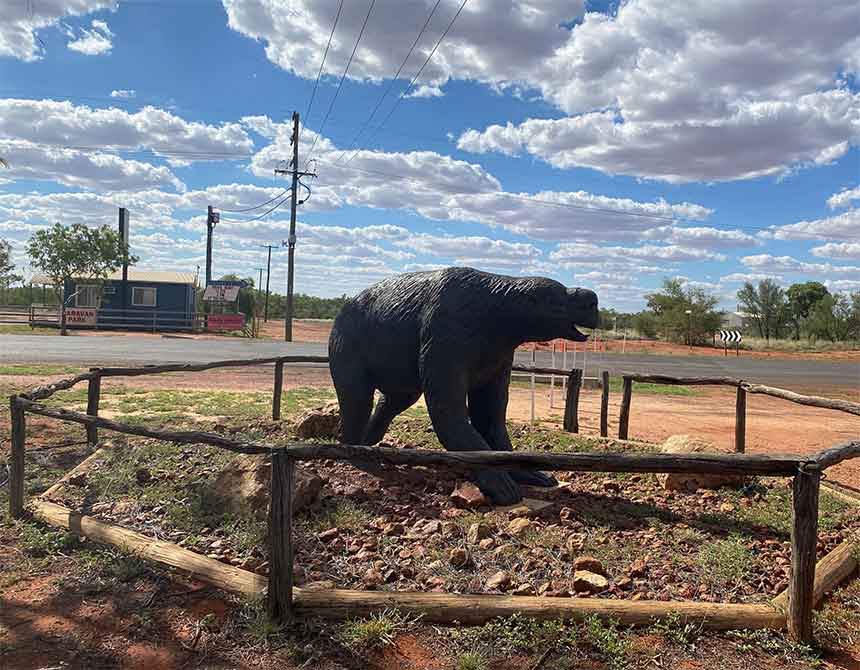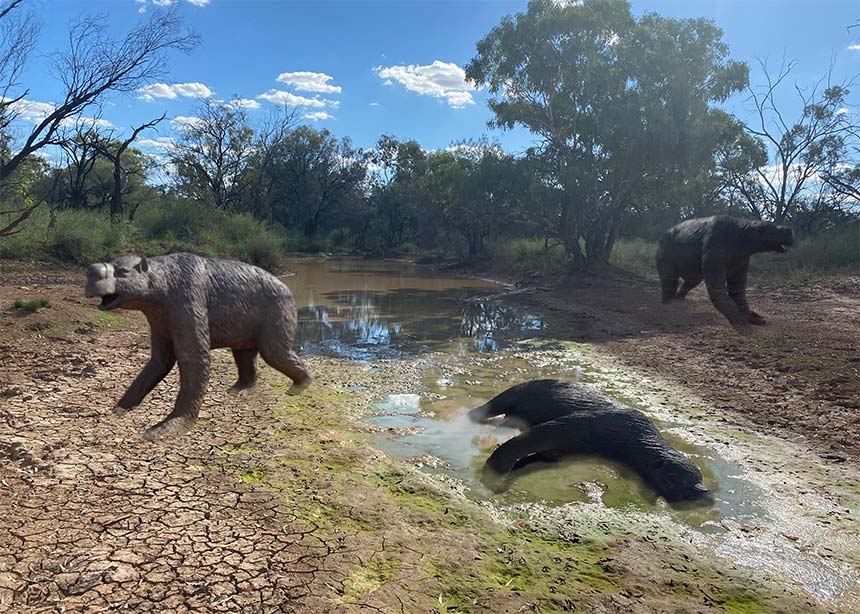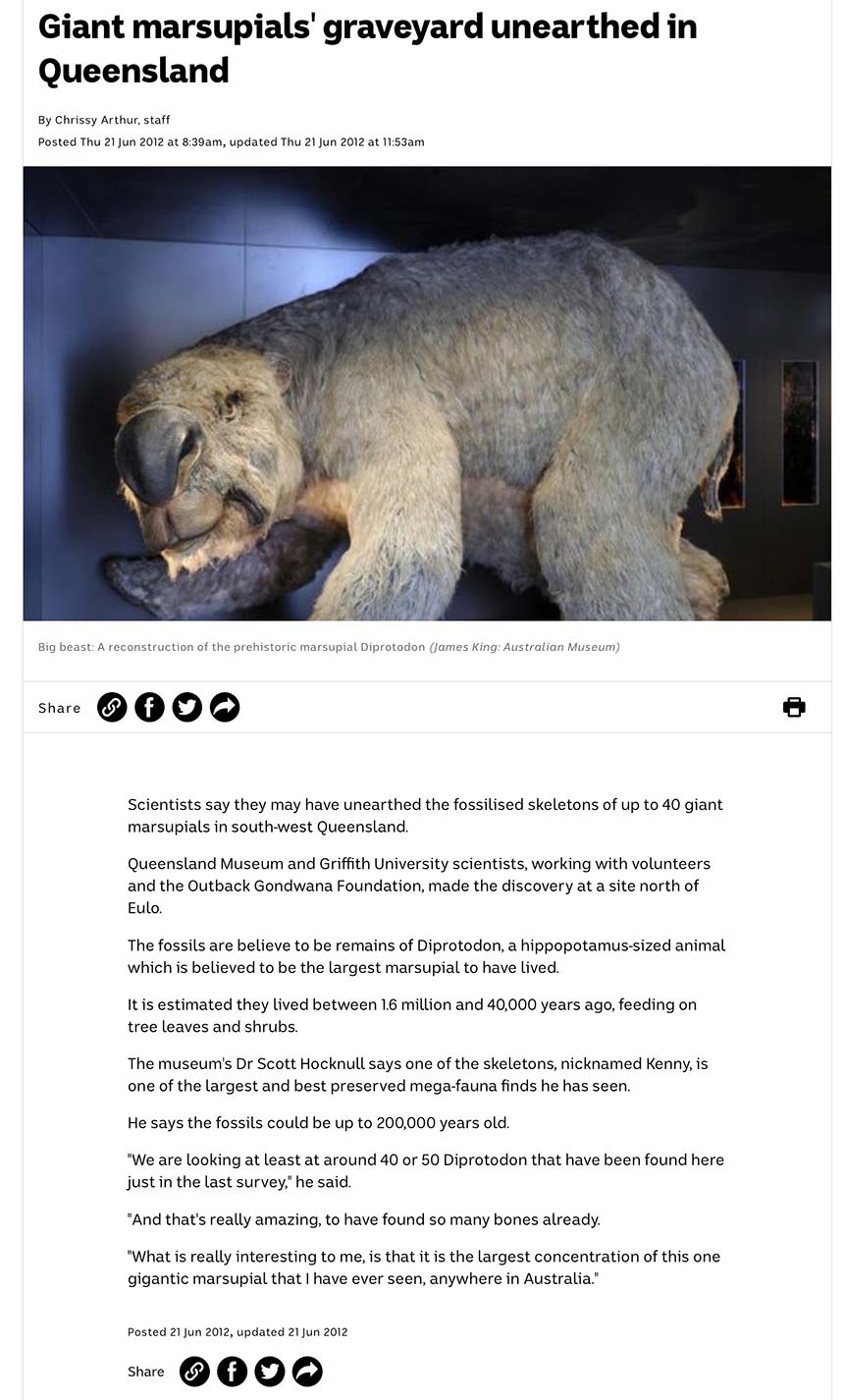EULO'S DIPROTODON - "KENNY"



This is a diprotodon - one of Australia’s now extinct marsupial megafauna species. Up until around 30,000 years ago you might well have spotted one of these giant wombat like creatures grazing around here beside the well watered springs that occur as part of the Eulo Springs Super Group.
Then as now, these natural sources of water in an arid landscape created ecological hotspots that supported a wide array of wildlife.
Fortunately for us today, the same alkaline waters in the springs which nourished the animals when alive also served to preserve them in the fine lagoon sediments when they died.

In 2011, the site of one of Australia’s most highly concentrated accumulations of megafauna fossils were discovered by Queensland Museum and the Outback Gondwana Foundation near Eulo. These included a large diprotodon nicknamed Kenny. Kenny’s fossilised bones were used by palaeontologists and sculptors to help reconstruct this full sized, fleshed out bronze statue.
It recognises the significance of the local Eulo discovery which contains diverse and well preserved remains of national scientific importance in unlocking the clues as to how Australia’s prehistoric animals lived and died.
